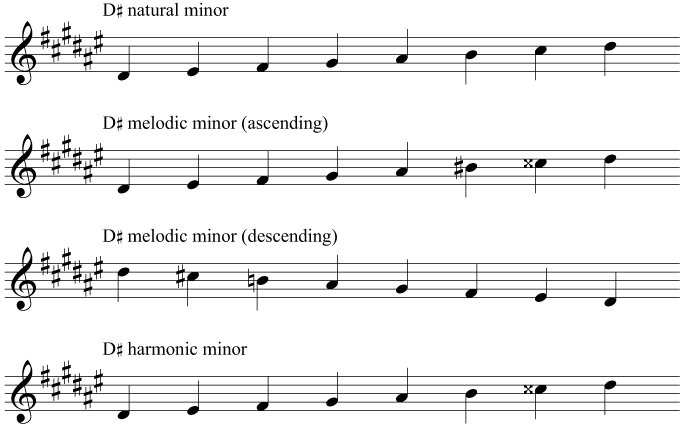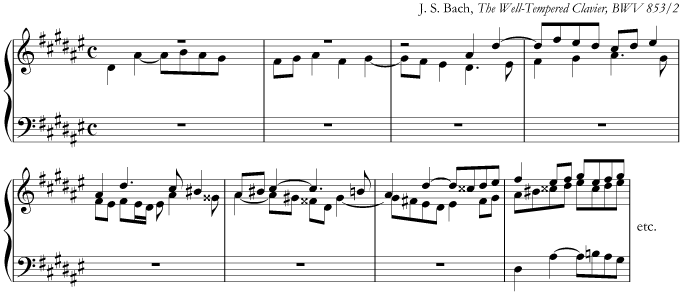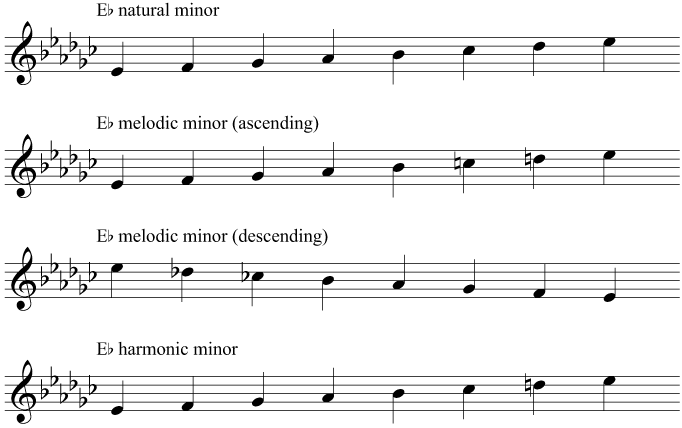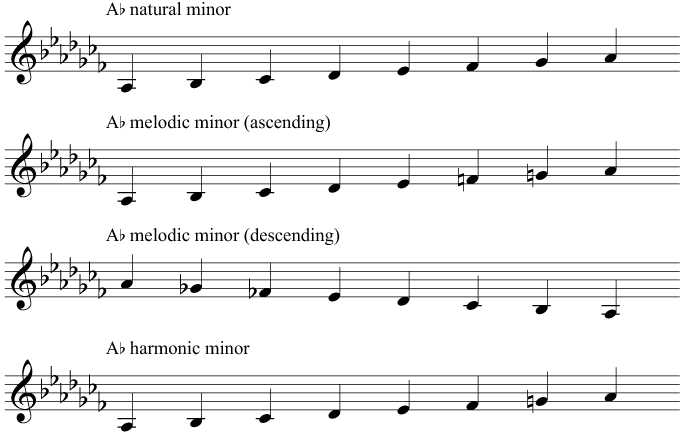Keys level 5
In this guide...
Key terms:
Subscription required!
To view the complete study guide, you will need a valid subscription. Why not subscribe now?
Already have a subscription? Make sure you login first!
Introduction
For the last guide in our series of key signatures and scales, we look at some new scales with up to 7 sharps and flats, and also at the correct order of sharps/flats in key signatures in the tenor clef.
The tenor clef
So far, we have looked at the correct order of sharps or flats in key signatures in the treble clef, bass clef, and alto clef.
We also need to consider the tenor clef, which along with the alto clef is a type of C clef, and has been covered in detail in The C clefs.
Although it is very similar to the alto clef, the different placement of the tenor clef in the stave means that the familiar rules for correct placement of the key signature need examining once again:
- Add new sharps (or flats) to the right of previous sharps (or flats)
(So in A major, we add the new sharp - G sharp - to the right of the two sharps from D major) - Put the sharp (or flat) in the highest available line (flats) or space (sharps), without going out of the stave
- The sharps (or flats) must rise and fall in sequence, unless doing so would cause the sharp/flat to go out of the stave
(So, if a sharp or flat is above the one before, the next sharp must go below)
If you do not play an instrument that uses the tenor clef, you will not quickly become familiar with the correct notation of key signatures in that clef. So, it's worth being sure of the rules, as that is easier than memorising every single key signature!
The alto clef key signatures
Let's look at two key signatures with which you will already be familiar, with five flats and sharps - but in the tenor clef.
 Tenor clef key signatures with 5 flats and sharps
Tenor clef key signatures with 5 flats and sharpsGiven these two key signatures, you can easily see how to construct the key signatures with fewer than 5 flats or sharps.
These two key signatures look straightforward, but perhaps a little strange: while the order of sharps tends to progress down in the other three clefs, here they progress up.
Similarly, the flats progress down in the tenor clef, but progress up in the other clefs.
Note also that the tenor clef sharps start on the lower F sharp, and not above the stave. This is an exception to ensure that we don't have to immediately have three descending sharps in a row, as would be the case if we started in the space above the stave.
F sharp major
F sharp major has six sharps, and is a relatively common key. Here it is in the treble clef with the key signature in the other three clefs - take special note of the positions of the sharps in the key signatures:
 The key signature and scale of F sharp major
The key signature and scale of F sharp majorD sharp minor
F sharp major is the relative major of D sharp minor, an uncommon key which requires the uncommon note C double sharp for the raised 7th. Here it is in the treble clef:
 The key signature and scales of D sharp minor
The key signature and scales of D sharp minorHere is a short segment of a fugue by J. S. Bach in the key of D sharp minor. Note the use of accidentals and double sharps, and look for the cautionary accidentals after barlines. In particular, notice how after a double sharp accidental is cancelled by a barline, the cautionary accidental is a single sharp.
 J.S. Bach, music in D sharp minor from The Well-Tempered Clavier, BWV853/2
J.S. Bach, music in D sharp minor from The Well-Tempered Clavier, BWV853/2C sharp major
Just as C major has no sharps or flats, in C sharp major, every note is a sharp! This makes it quite easy to remember, even if it appears awkward to play; the key signature shows all 7 sharps in the correct positions:
 The key signature and scale of C sharp major
The key signature and scale of C sharp majorA sharp minor
As you will know from reading Related keys, every major scale has a relative minor, and C sharp major is no exception.
However, the relative minor of C sharp major is A sharp minor, a key so awkward that it is almost never used - instead, the enharmonic equivalent B flat minor is used instead. With just 5 flats, that's a much easier proposition!
A sharp minor is not covered in either the Associated Board or Trinity College of Music Grade 5 Theory exams.
G flat major
G flat major has six flats. Compare the position of these flats in each clef:
 The key signature and scale of G flat major
The key signature and scale of G flat majorE flat minor
The relative minor of G flat major is E flat minor. Here it is in each of the minor forms:
 The key signature and scale of E flat minor
The key signature and scale of E flat minorC flat major
Just as C sharp major has every note sharp, C flat major has every note flat, which also makes it easy to remember. The key signature shows all 7 flats in the correct positions, and is therefore one to remember:
 The key signature and scale of C flat major
The key signature and scale of C flat majorA flat minor
Unlike the relative minor of C sharp major, the relative minor of C flat major: A flat minor is quite a common key, and a comparatively straightforward key in which to play.
 The key signature and scale of A flat minor
The key signature and scale of A flat minorEnharmonic keys
Now that we have finished our cycle through all of the keys from 0 flats and sharps up to 7 flats and 7 sharps, we can spot a few keys that sound exactly the same, but are notated differently.
- B major and C flat major (also G sharp minor and A flat minor)
- D flat major and C sharp major
- G flat major and F sharp major (also E flat minor and D sharp minor)
These pairs of keys are called enharmonic keys: in which every note of one key in the pair has its enharmonic equivalent on the same degree of the other key in the pair.
Knowing some of these enharmonic pairs can make playing scales easier - you might for example prefer to think "in" D flat major than C sharp major!
Read more...
With a subscription to Clements Theory you'll be able to read this and dozens of other study guides, along with thousands of practice questions and more! Why not subscribe now?
Revision
Are you sure you've understood everything in this study guide? Why not try the following practice questions, just to be sure!